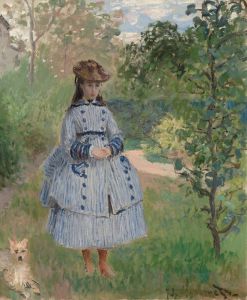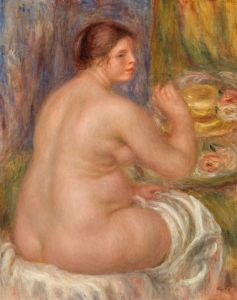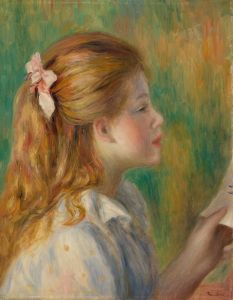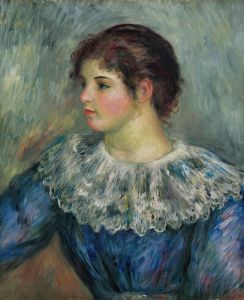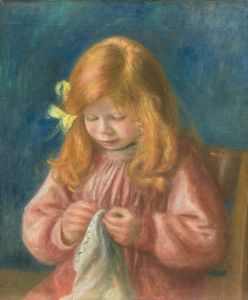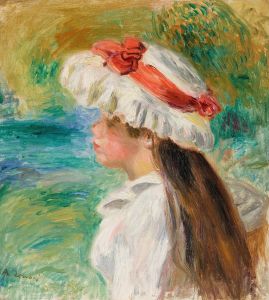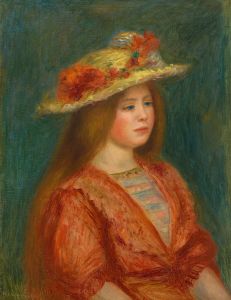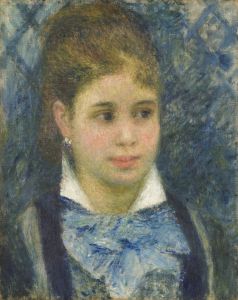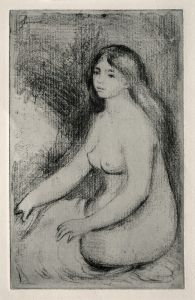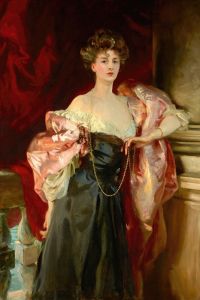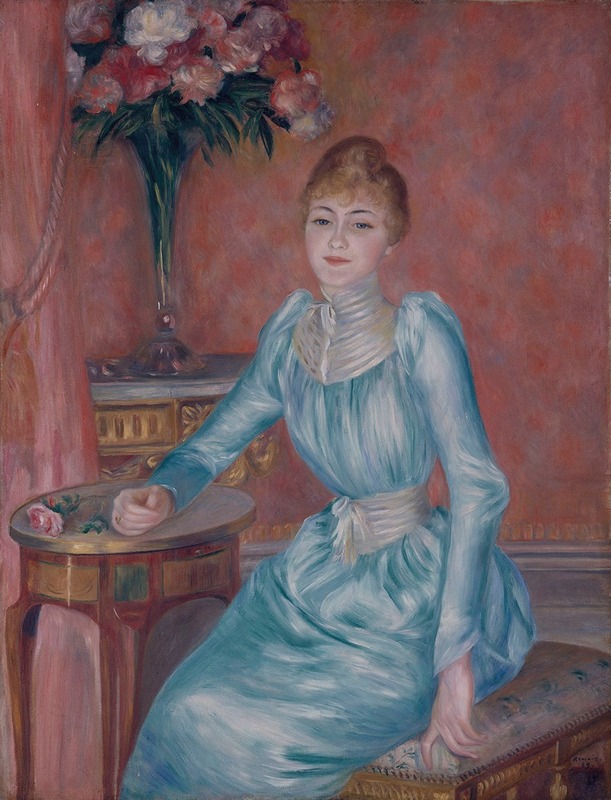
Portrait de Madame de Bonnières
A hand-painted replica of Pierre-Auguste Renoir’s masterpiece Portrait de Madame de Bonnières, meticulously crafted by professional artists to capture the true essence of the original. Each piece is created with museum-quality canvas and rare mineral pigments, carefully painted by experienced artists with delicate brushstrokes and rich, layered colors to perfectly recreate the texture of the original artwork. Unlike machine-printed reproductions, this hand-painted version brings the painting to life, infused with the artist’s emotions and skill in every stroke. Whether for personal collection or home decoration, it instantly elevates the artistic atmosphere of any space.
Pierre-Auguste Renoir's Portrait de Madame de Bonnières is a painting created by the renowned French Impressionist artist. Renoir, celebrated for his mastery of light, color, and portraiture, painted this work during the late 19th century, a period when he was deeply engaged in capturing the elegance and individuality of his sitters. The subject of the painting, Madame de Bonnières, is depicted with a refined and graceful demeanor, characteristic of Renoir's ability to convey both the physical likeness and the personality of his subjects.
The painting showcases Renoir's signature style, with soft brushstrokes and a delicate interplay of light and shadow. The artist's use of color is particularly notable, as he employs a harmonious palette to highlight the textures of the clothing and the sitter's complexion. Madame de Bonnières is portrayed in a seated position, exuding poise and sophistication, which reflects the social and cultural milieu of the time.
While specific details about Madame de Bonnières herself are limited, it is known that Renoir often painted members of the French bourgeoisie and upper class, as well as individuals from his social and artistic circles. His portraits from this era frequently emphasize the elegance and charm of his sitters, aligning with the Impressionist movement's focus on capturing fleeting moments and the essence of modern life.
Portrait de Madame de Bonnières is an example of Renoir's transition from his earlier, more experimental Impressionist works to a more structured and classical approach to portraiture. This shift in style is evident in the painting's composition and attention to detail, which demonstrate Renoir's growing interest in the traditions of the Old Masters while maintaining the vibrancy and immediacy of Impressionism.
The painting is held in a private collection, and its exact provenance and exhibition history are not widely documented. However, it remains an important example of Renoir's portraiture and his ability to blend technical skill with an intimate understanding of his subjects.





